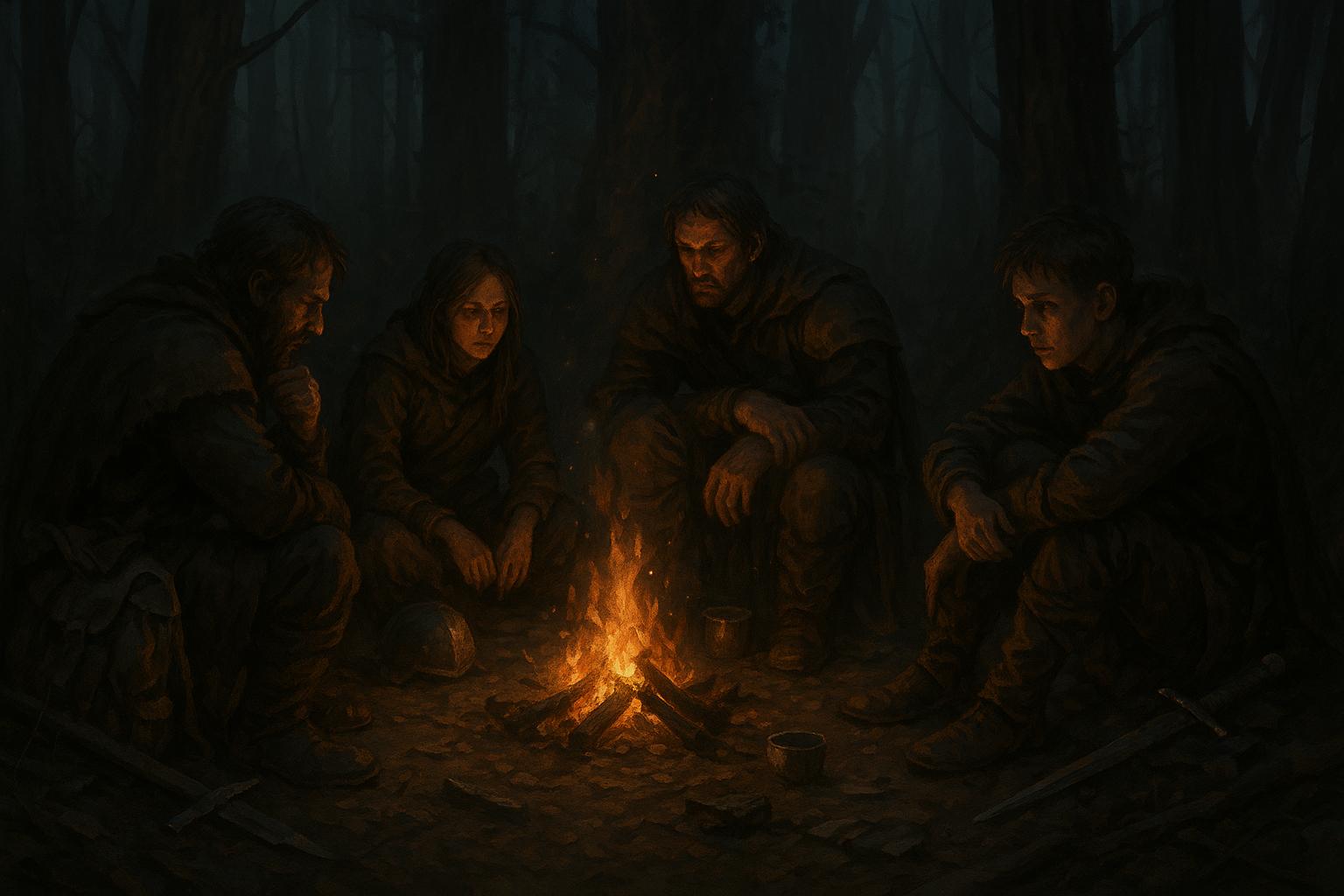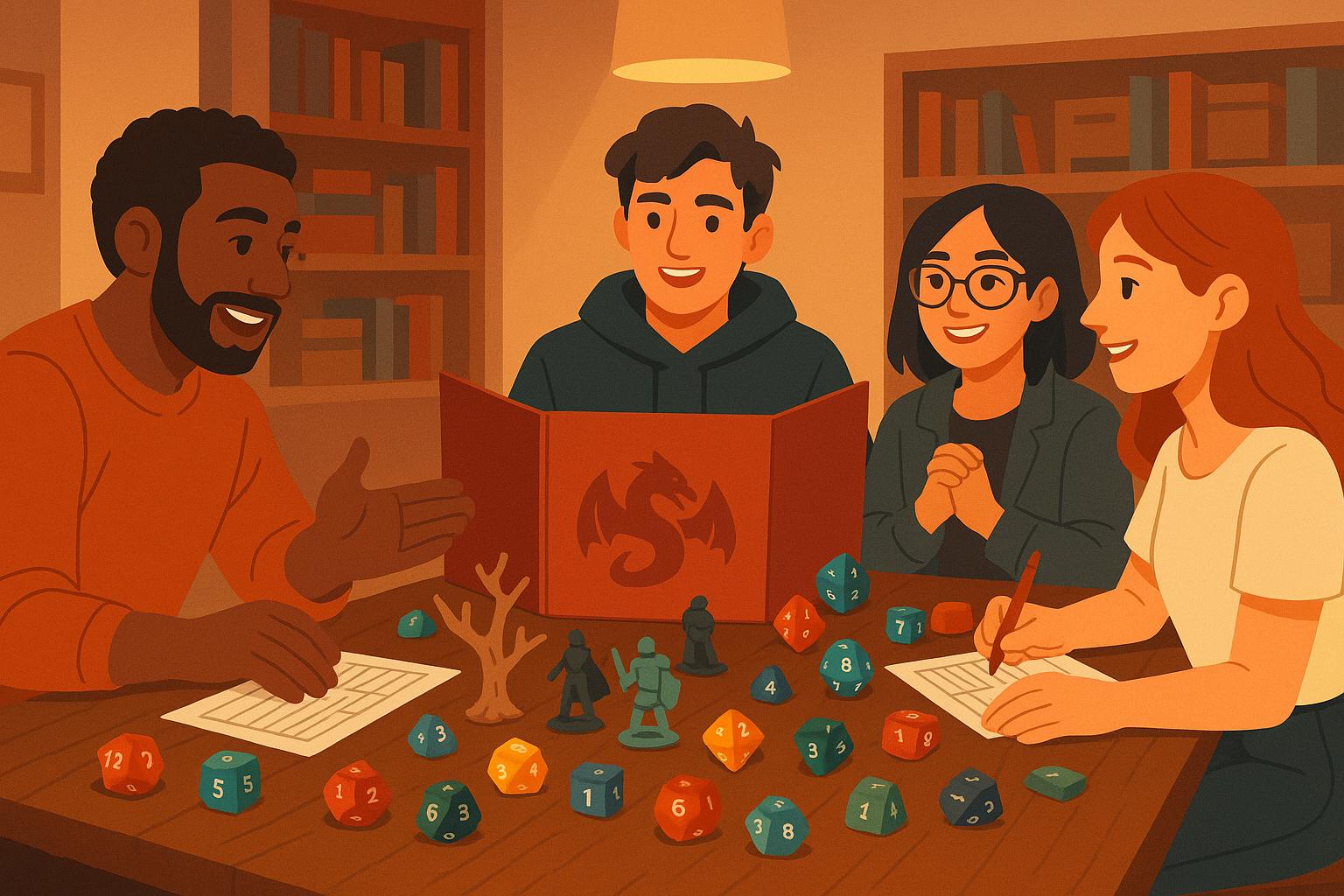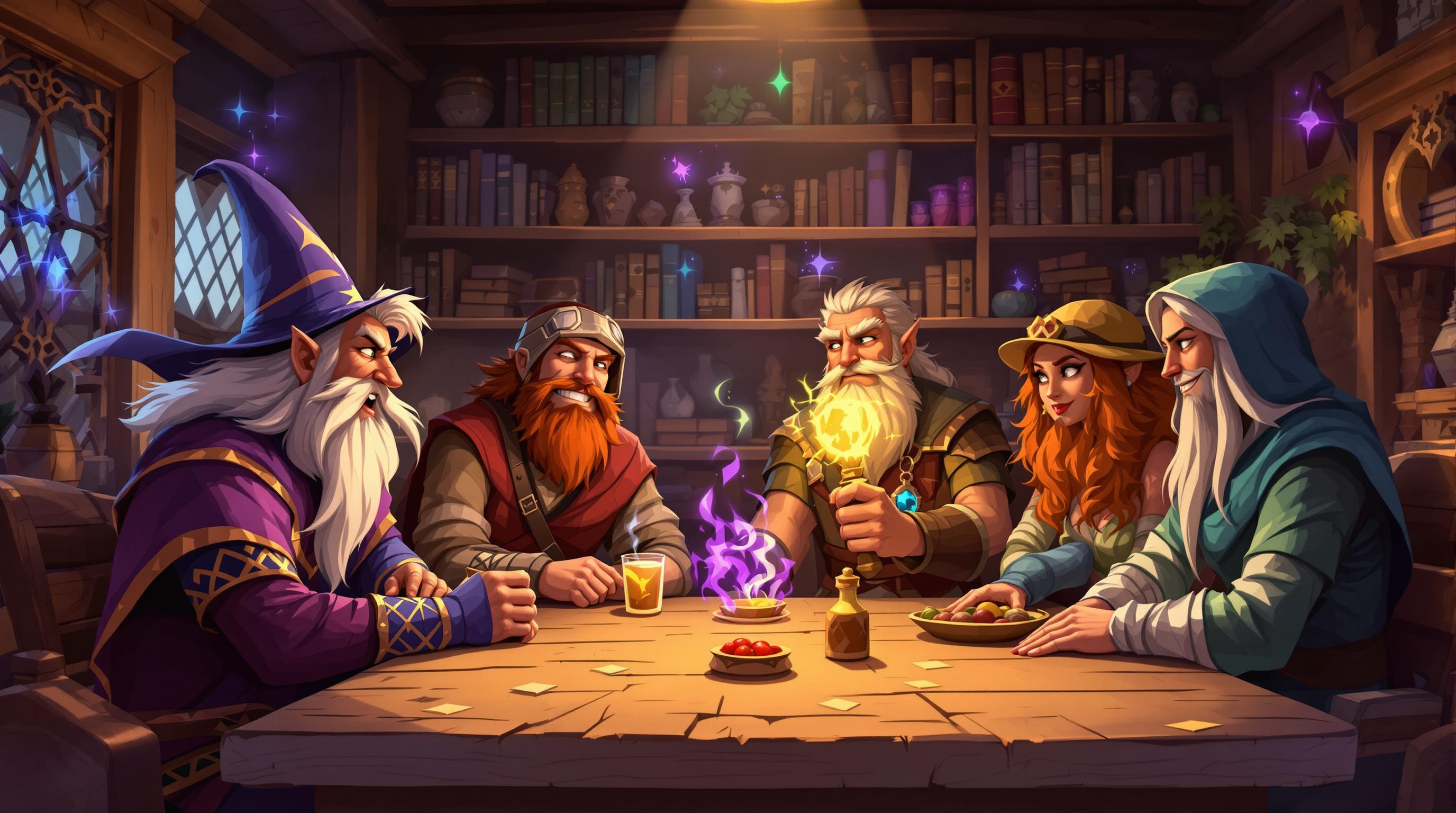NSR (New School Revolution) games are designed to work seamlessly for both quick one-shot adventures and long-term campaigns. Their simple mechanics, fast character creation, and emphasis on storytelling make them ideal for players and game masters (GMs) who want to focus on the narrative rather than complex rules. Here’s why they stand out:
- One-Shots: NSR games are easy to set up, with rules that prioritize fast-paced action and quick immersion. Players can dive in with minimal preparation, making them great for conventions, casual sessions, or introducing new players.
- Campaigns: These games shine in extended play, offering systems that naturally evolve through player choices, character growth, and dynamic world-building. They allow for deep storytelling without overwhelming mechanics.
Whether you want a short session or a sprawling narrative, NSR games strike the perfect balance between simplicity and depth.
Use Cairn to Design Your RPG
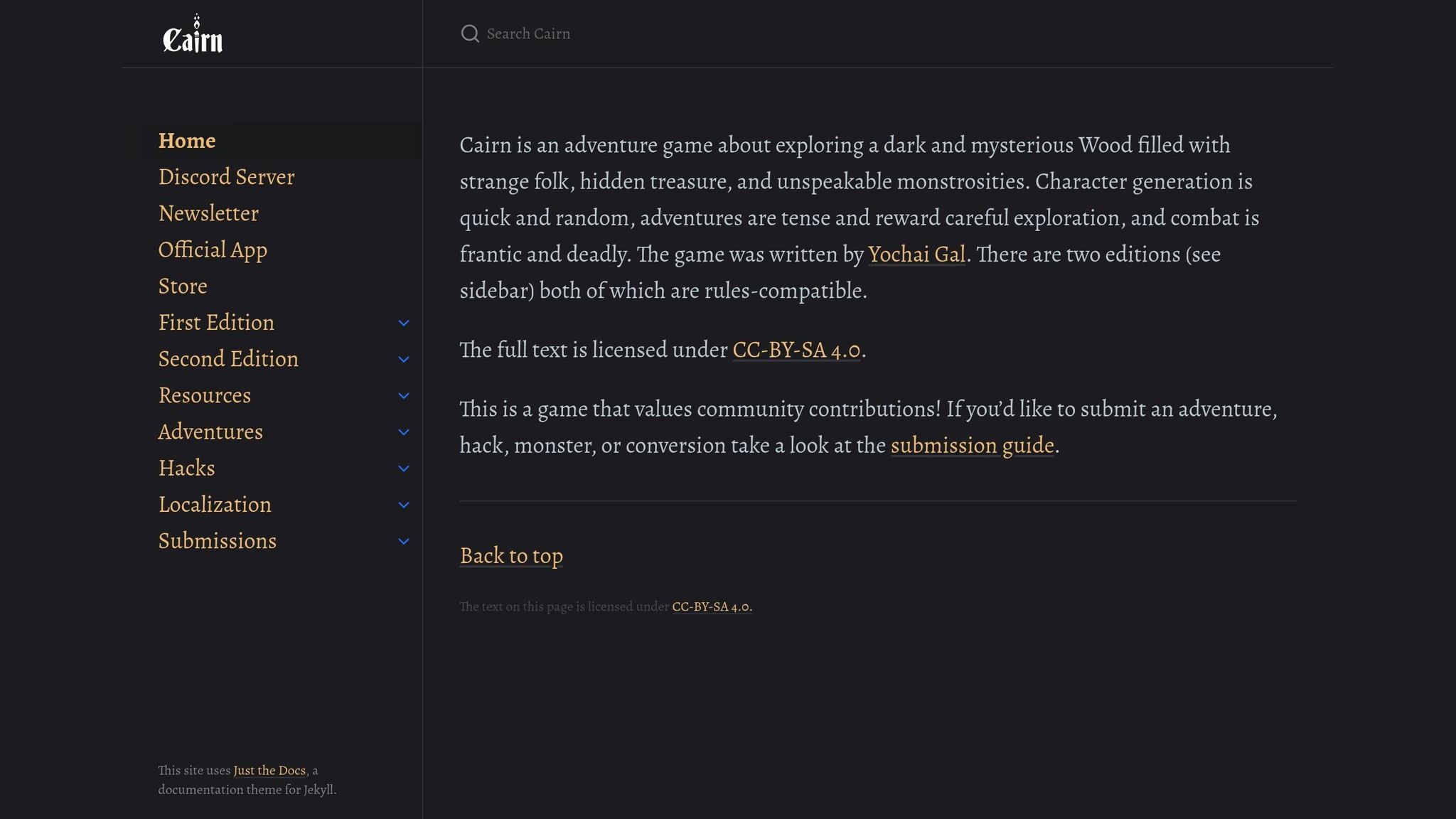
Understanding NSR: Core Features and Design Principles
NSR games take a bold step away from traditional formulas, prioritizing player freedom, inventive problem-solving, and dynamic storytelling. These games focus on narrative-driven experiences rather than rigid rule sets. While many systems stick to tried-and-true conventions, NSR designers actively push boundaries. They draw inspiration from what made early Dungeons & Dragons so engaging, but reinterpret those ideas to fit modern playstyles. Some creators even describe NSR as “a conceptual divorce from D&D and the systems it inspired”. This break from legacy compatibility encourages designers to explore fresh mechanics and focus on delivering the experiences they envision.
What Makes NSR Different?
At its heart, NSR adopts a rules-light, fiction-first philosophy, putting the story front and center. Instead of bogging players down with exhaustive rules for every possible scenario, these games use flexible frameworks that adapt to the narrative. Game masters (GMs) are given significant creative freedom to interpret player actions in ways that enhance the story, while players’ decisions naturally drive the direction of the game.
NSR vs. OSR: Key Differences
While NSR and OSR (Old School Renaissance) games share some philosophical roots, their approaches to design are notably different. OSR games often aim for compatibility with TSR-era D&D rules. Systems like OSRIC, Swords & Wizardry, and Labyrinth Lord were built so players could easily use classic modules with minimal adjustments. NSR, on the other hand, deliberately avoids this compatibility. While both movements emphasize player agency and creative problem-solving, NSR designers aren’t concerned with whether their mechanics align with decades-old adventure modules.
This freedom from legacy systems allows NSR games to experiment with mechanics in ways that traditional models don’t. For instance, a game like Cairn retains the familiar six-ability-score framework of classic D&D but introduces modern twists in areas like combat, magic, and character progression. This experimental mindset opens the door to “trying all sorts of new stuff” and exploring “different stuff”. As a result, NSR games provide GMs with a versatile toolkit to shape unique experiences, whether for one-shot adventures or long-running campaigns.
Why NSR Games Work Well for One-Shots
NSR games excel in one-shot scenarios because they focus on delivering fast-paced action and streamlined gameplay. Their design ensures players can jump right into the fun while still crafting memorable experiences, even within a few short hours.
Simple Mechanics and Quick Setup
The rules-light approach of NSR games is perfect for one-shots. Players can pick up the mechanics as they go, cutting out the need for lengthy pre-game prep. Character creation is quick and intuitive, making it easy for everyone to dive into the game without spending hours on setup.
This simplicity eliminates the need for players to spend time outside the session building characters, memorizing spell lists, or planning intricate character arcs. Instead, players can just show up and play, making NSR games a great fit for conventions, casual lunch breaks, or last-minute game nights where players might have varying levels of experience with tabletop RPGs.
For the GM, the setup is just as straightforward. NSR systems are designed to work with minimal prep, often requiring only a handful of key locations, a few NPCs, and a clear objective. The flexible frameworks allow the story to unfold naturally based on player choices. This makes it easy for GMs to adapt on the fly, ensuring the session feels spontaneous and engaging. With these tools, NSR games can quickly evolve into a complete narrative without the need for a detailed script.
Modular Storytelling for Self-Contained Play
NSR games thrive on modular storytelling tools like encounter tables and complication charts, which are perfect for single-session adventures. These tools help GMs improvise and connect story elements as they arise, ensuring the narrative feels organic and player-driven.
Instead of following a rigid, pre-planned plot, the story develops naturally through player decisions and dice rolls. This approach guarantees that each session feels like a complete experience, with players actively shaping the narrative while the GM serves as a neutral guide.
Convention organizers often highlight this strength. For example, U-Con's event guidelines praise NSR games for their mix of emergent storytelling, simple mechanics, and GM-led structure. This combination works perfectly for typical 3–4 hour convention slots, where there's little time for extensive setup or backstory.
The modular nature of NSR tools also gives GMs the flexibility to adapt in real time. If players latch onto an unexpected plot thread or want to explore a tangent, the GM can easily adjust by consulting a random table or tweaking the framework. This adaptability ensures the session stays dynamic and engaging, all while moving toward a satisfying conclusion.
Memorable Settings for Instant Immersion
NSR games stand out for their fiction-first design philosophy, offering settings that immediately grab players’ attention and establish a distinct tone. Unlike traditional fantasy RPGs that rely on familiar tropes and lengthy exposition, NSR games often feature unique premises that are easy to grasp but rich with creative potential.
These distinctive settings play a key role in one-shots by providing instant buy-in. Players quickly understand the game's tone and the kinds of actions that will be effective. For instance, the surreal science-fantasy vibe of Troika or the chilling survival horror elements of Mothership immediately set the stage, helping players immerse themselves without needing a lengthy introduction.
NSR settings often weave narrative details directly into gameplay. Instead of overwhelming players with dense lore, these games integrate world-building into mechanics and random tables. This approach keeps the cognitive load low while still immersing players in the game's flavor - perfect for groups that need to establish atmosphere quickly and jump into the action. Even complex or unusual settings become accessible within minutes, allowing players to explore the world naturally through their characters’ choices and the unfolding story. With evocative and easy-to-grasp concepts, NSR games make every moment of a one-shot count.
Why NSR Games Support Long Campaigns
NSR games aren't just great for quick, one-off adventures - they shine just as brightly when it comes to running long-term campaigns. Thanks to their streamlined mechanics, these games offer a smooth and engaging experience that evolves naturally over time. The same simplicity that makes them perfect for short sessions also lays the groundwork for deep, immersive storytelling in extended campaigns.
Emergent Storytelling and Player Impact
One of the standout features of NSR games is how they let stories grow organically. Player choices take center stage, with decisions made early on rippling through the narrative in later sessions. This creates a dynamic world that feels alive and directly shaped by the players' actions.
Simple Yet Rewarding Progression
Instead of relying on complicated leveling systems, NSR games focus on narrative milestones and gradual character growth. This keeps the spotlight on storytelling and roleplaying, making character development feel natural and tied to the unfolding events of the campaign. It’s an approach that keeps players invested without bogging them down in mechanics.
Built-In Customization and Creativity
The DIY nature of NSR games makes them incredibly easy to tweak and personalize. Game masters can adjust rules, add content, or introduce new elements as the campaign progresses. This flexibility helps ensure that every campaign feels fresh and tailored to the unique preferences and playstyle of the group.
sbb-itb-b8b00a5
Popular NSR Games for One-Shots and Campaigns
NSR games prove their value for both quick adventures and longer campaigns, combining simplicity with depth. Each game embraces the foundational principles of NSR while offering its own distinct approach to gameplay.
Cairn
Cairn is a standout example of NSR design. Drawing inspiration from Into the Odd and Knave, it uses a straightforward d20 roll-under system with just three core stats: Strength, Dexterity, and Willpower. Character creation is fast and random, making it perfect for quick starts. Combat is streamlined - there’s no "roll to hit"; every attack lands, and armor simply reduces damage. This approach emphasizes a "combat is war, not sport" philosophy [8, 11].
The game also includes an efficient inventory system that keeps bookkeeping to a minimum, allowing players to focus on exploration. For extended campaigns, Cairn introduces a unique scar mechanic. When a character hits exactly 0 HP without losing Strength, they gain a scar, adding an unpredictable layer of character growth. This feature works especially well in West Marches–style play [8, 10, 11].
Knave
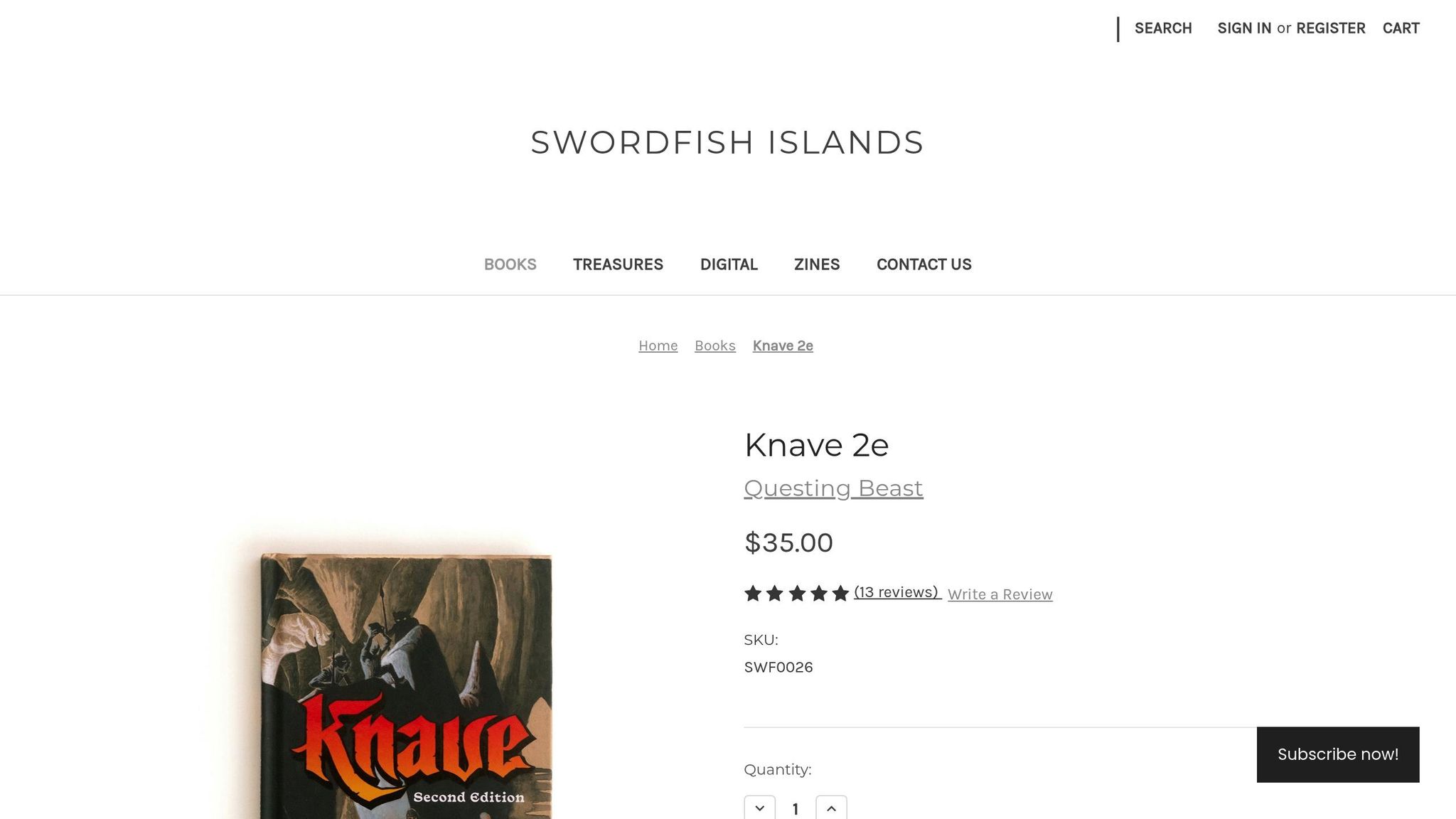
Knave is widely praised in the OSR community for its minimalist mechanics [7, 8]. The game defines characters primarily by their equipment, with abilities naturally evolving as gear improves. This simple yet effective system makes Knave ideal for both one-shots and campaigns, offering a seamless blend of adaptability and progression.
Mothership
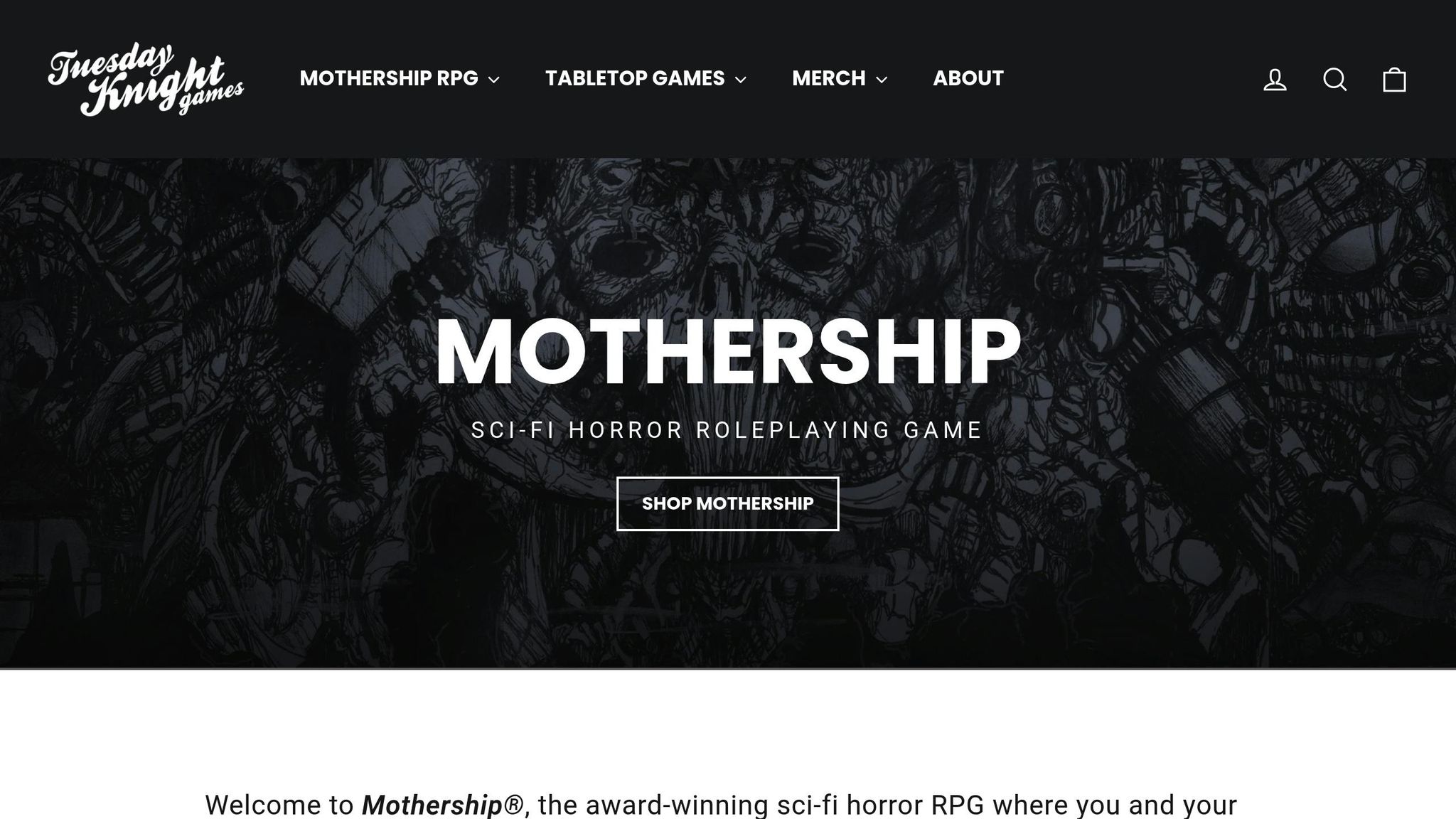
Mothership takes the NSR framework into the realm of sci-fi horror. Its flexible mechanics and atmospheric setting make it equally effective for intense one-shot sessions or longer campaigns filled with creeping dread and survival challenges.
Troika
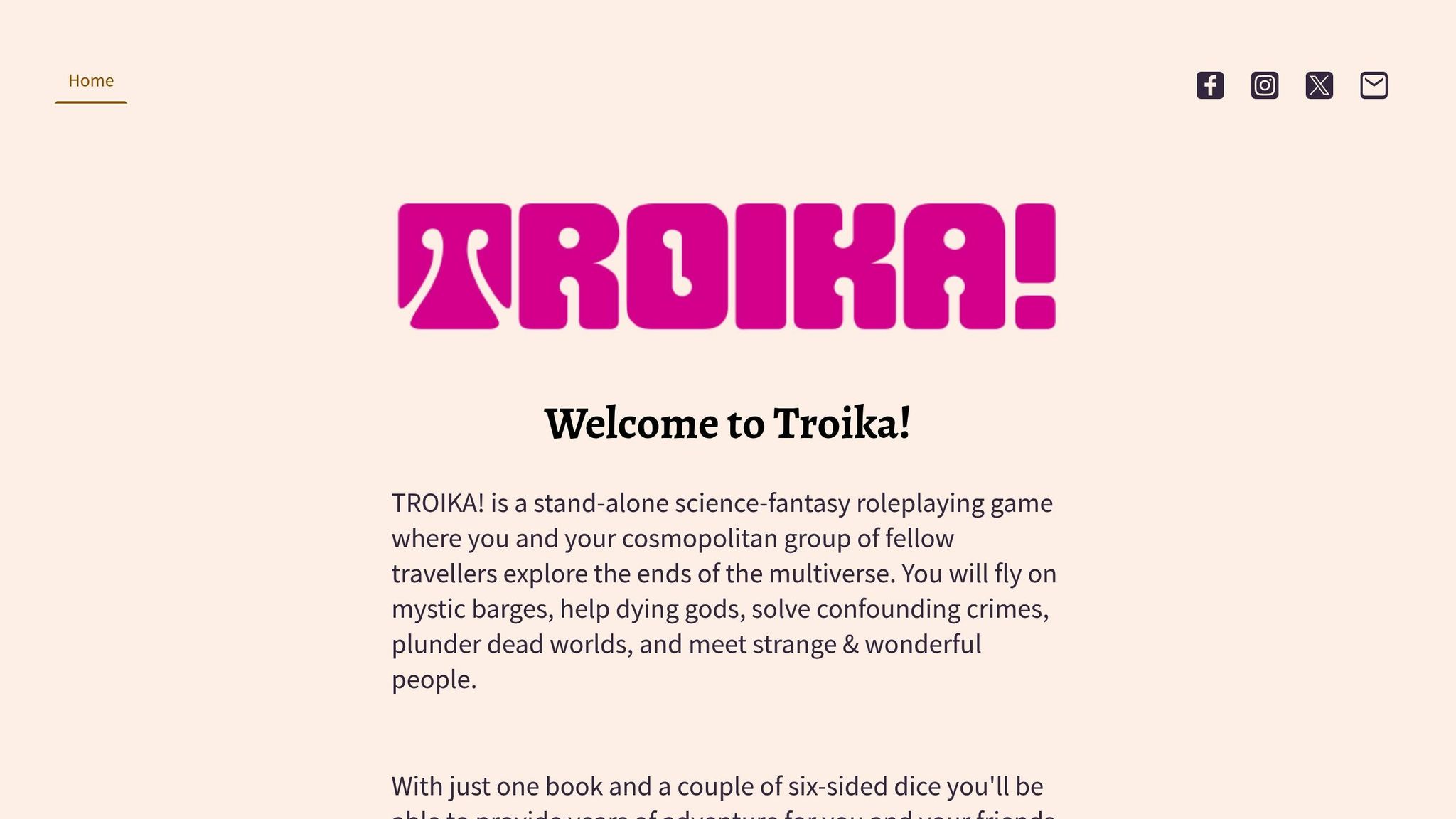
Troika is a surreal blend of sci-fi and fantasy, offering a dreamlike setting where "anything is possible". Instead of relying on dense lore, it encourages imaginative play through evocative descriptions and art. Character creation is quick and quirky - roll a d6 twice, and you’re ready to go - making it perfect for one-shots.
Combat is fast-paced, using opposed checks and a unique initiative system that keeps players on their toes. While some critics note that its eccentric characters can feel "logically inconsistent" in long-term play, the game's "fever dream" aesthetic has successfully supported months-long campaigns for many groups.
These games highlight how NSR titles balance simplicity with engaging mechanics, making them suitable for both quick evening adventures and sprawling campaigns. Whether you're diving into a sci-fi horror tale, a surreal fantasy world, or a classic dungeon crawl, these games offer the flexibility to match your style of play.
Choosing Between One-Shots and Campaigns
NSR games shine in both short and extended formats, making them versatile for various play styles. Deciding between a one-shot or a campaign depends on your group's goals, time availability, and the type of experience you want. Here's a closer look at when each format works best and how to make the most of your sessions.
When to Choose a One-Shot
One-shots are perfect for quick, low-commitment gaming sessions. They’re especially well-suited for conventions, where players can enjoy a full adventure in just 3–4 hours. Thanks to NSR's streamlined setup, you can jump right into the action without spending time on lengthy preparations.
They’re also a great way to introduce new players to the hobby. Games like Cairn or Knave offer straightforward mechanics, allowing beginners to focus on the fun rather than getting bogged down by complex rules. It’s a welcoming way to let newcomers dip their toes into the world of tabletop RPGs.
If you’re experimenting with new systems, settings, or house rules, one-shots are ideal. They give you the freedom to test ideas without committing to a long campaign. If something doesn’t work, it’s no big deal - you’ve only spent a single session.
For groups with irregular schedules or during special occasions like holidays, one-shots are a hassle-free option. They don’t require ongoing commitment or continuity, making them perfect for casual gatherings or gaming with family members who may not play regularly.
When to Choose a Campaign
Campaigns are the go-to choice when you're looking for deeper narratives and extended character development. NSR games excel at creating emergent stories, where simple mechanics evolve into intricate plots over time. Elements like faction play and political intrigue naturally unfold in campaigns, offering layers of complexity that one-shots can’t replicate.
Character growth takes on a richer dimension in campaigns. Unlike traditional RPGs that focus on leveling up, NSR games emphasize growth through experiences and relationships. For example, the scars system in Cairn becomes meaningful as characters endure and survive multiple challenges, adding emotional weight to their journeys.
Exploration-focused gameplay fits perfectly within a campaign structure. Building a dynamic world where player actions leave lasting impacts requires time to fully develop. The West Marches style of play, where different groups explore a shared, persistent world, highlights how NSR games thrive in long-term exploration.
Mysteries and investigations also benefit from the extended format. Clues uncovered in early sessions can lead to satisfying payoffs months later, creating a sense of continuity and achievement that’s hard to achieve in a single session.
Session Length and Pacing Tips
Once you’ve chosen your format, it’s important to plan sessions that keep players engaged and make the most of your time together. Most groups prefer 3–4 hour sessions, often held on weeknights or weekend afternoons. NSR games adapt well to this timeframe, thanks to their efficient mechanics.
For one-shots, a three-act structure works well:
- Setup: Spend 60–90 minutes introducing the scenario.
- Climax: Dedicate another 60–90 minutes to the main conflict or challenge.
- Resolution: Wrap up the story in 30–60 minutes.
This approach ensures you cover all the key moments while leaving room for those unexpected twists that make NSR games so memorable.
Campaign sessions, on the other hand, benefit from dynamic pacing. Some sessions might focus on exploration and world-building, while others lean into intense combat or roleplay. The modular design of NSR games allows you to adjust the focus based on what excites your players most.
Keep an eye on your group’s energy levels throughout the session. Early on, players are often more focused, making it a good time for puzzles or strategic decisions. As the session nears its end, shift to action-packed or climactic moments for a satisfying conclusion. NSR’s consistent mechanics make it easy to maintain this flow without bogging players down in complicated rules.
Finally, respect your group’s schedule. Start and end on time, as many players juggle work, family, and other commitments. The simplicity of NSR systems helps ensure sessions run smoothly, without delays from rule-checking or drawn-out combat.
Conclusion: The Flexibility of NSR Games
NSR games bring a rare quality to tabletop gaming: true flexibility. Whether you're setting up a quick one-shot for a convention or diving into a year-long campaign, these systems adjust effortlessly to fit your needs - all without sacrificing the fun or the quality of the experience.
The streamlined mechanics of NSR games make them perfect for fast-paced play, while also laying the groundwork for richer, more intricate storytelling over time. This balance ensures that both short and extended sessions flow naturally, keeping players engaged.
As highlighted earlier, the modular design of NSR games allows for both swift, self-contained adventures and long, evolving narratives. The tools that help you create a complete story in just a few hours are the same ones that support the kind of meaningful, player-driven choices that make campaigns unforgettable. Whether decisions are made in a single session or over the course of dozens, they carry weight and shape the story.
NSR games also respect your time and creativity. They don’t require hours of preparation or rigid structures to deliver a satisfying experience. You can jump into an exciting one-shot with minimal effort, and if the group decides to continue, those same characters and situations can easily grow into a larger, ongoing campaign. With emergent gameplay at the heart of NSR, each session builds naturally on what came before - whether planned or improvised.
This adaptability isn’t just about session length. NSR systems are equally welcoming to experienced players and newcomers, offering tactical depth while remaining accessible. They fit into any schedule, whether you’re playing weekly or only now and then.
FAQs
What makes NSR games unique compared to traditional RPGs when it comes to character development and storytelling?
NSR (New School Revolution) games take a different approach by emphasizing player-driven storytelling and natural character development. Instead of sticking to rigid progression systems or pre-set storylines, these games let characters grow organically through decisions and shared narrative moments.
This design creates a collaborative and deeply engaging experience, where the story shifts and evolves based on the players' actions. Unlike traditional RPGs, which often focus on structured mechanics for character growth, NSR games lean into flexibility and creativity, making them perfect for dynamic, player-centered storytelling.
What are some standout settings or mechanics in NSR games that work well for both one-shots and campaigns?
NSR games bring a fresh mix of settings and mechanics that work well for both short one-shots and extended campaigns. Take Cairn, for instance. It uses a simplified d20 system that emphasizes exploration, making it accessible for beginners while still delivering rich, immersive adventures. Then there’s Wanderhome, which opts for a token-based system that’s perfect for peaceful, collaborative storytelling - ideal for players who enjoy narrative-driven sessions.
Other standout examples include Knave 2nd Edition, a classless game that offers tactical gameplay and easily adapts to stories of any length. Meanwhile, The Wildsea invites players into a solarpunk-inspired world of sprawling treetops, encouraging creative and cooperative play. These systems and settings give players and game masters the tools to shape their experiences, whether it’s a quick evening of fun or a deep, ongoing campaign.
How can game masters turn a one-shot adventure into a full campaign using NSR games?
Expanding a one-shot into a full campaign using NSR games starts with weaving a broader story arc around the events of the original session. This could mean introducing new dangers, unraveling lingering mysteries, or offering fresh opportunities for the characters to evolve. NSR games make this process smooth thanks to their modular storytelling frameworks, which allow you to layer new elements into the narrative without overwhelming the players.
On top of that, the flexible character progression in NSR systems lets players naturally grow their characters as the story unfolds. The streamlined mechanics also make it simple to adjust the pacing and complexity as the campaign develops. By building on the groundwork of the one-shot, you can craft a cohesive, engaging long-term adventure that keeps everyone invested.
